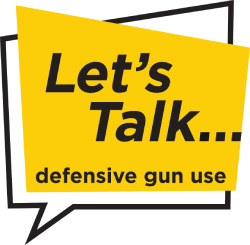What can happen immediately after the shots are fired in self-defense? Do you render first aid, and are you prepared?
There are many things to learn from watching this video, but my emphasis is on what happened after the shooting.
I often talk about how to prevent being involved in a confrontation. Someone recently asked me why the person who was shot in another video I discussed didn’t receive medical attention from the responding officers.
What Happened After This Shooting Caught on Body Cam
This is a separate case that recently happened in Chicago. The officer on top of the individual in this video is a Field Training Officer (FTO). A couple of people have said the second officer was fresh out of the academy (I haven’t been able to 100% confirm this, but the pieces fit).
This article is NOT ABOUT TACTICS and what could have been done better. Its focus is after the shots are fired.
In the body cam, the man tells officers to kill him as they wrestle over his gun. The younger officer dropped his firearm during the altercation to help the FTO. After several seconds, two shots were fired during the struggle on the floor. The individual clearly was not going to allow himself to be arrested and ended up getting shot. He even said multiple times, “Shoot me.”
After the shots are fired, it goes from bad to worse. The younger officer, who did not fire his weapon, runs out to the squad car to get a first aid kit, then returns to the house.
- It appears the officer had no medical supplies on him. Not even a tourniquet (TQ)
- When he looks for a medical kit, it is not readily accessible, and when he opens the trunk, he rummages through things, looking for what he needs.
- The gloves to prevent blood contamination are not in the kit. If they are, he is not aware of it. Again, those few seconds could mean the difference between life and death.
You often hear the term “Individual First Aid Kit” (IFAK) when referring to a small medical first aid kit someone would carry.
It was almost a minute before the officer returned and would have been ready to render aid. I don’t think there was any chance of saving the guy, even if they could have immediately treated his wound.
The suspect did not survive, but neither officer was physically injured. Emotional trauma for the officers involved is a different story.
WARNING: This is for training and awareness; some people will find it difficult to watch. Not as much because of the medical aspect, but you can feel the officer’s emotions. It does an excellent job of showing what these guys go through.
The full video can be seen here. All of the case files are here that have been released by the Civilian Office of Police Accountability (COPA).

How Long Does It Take to Bleed Out From a Gunshot?
A person can bleed to death in as little as 2 minutes if someone doesn’t stop the bleeding. The average time it takes for a person to bleed out following severe physical trauma, such as a gunshot wound, is between three and five minutes. The average response time for emergency personnel is 7 to 10 minutes. In some areas, this wait time can be considerably longer.

In the image, you can see how easily it is to carry a tourniquet you can get to quickly. This is on the holster of an officer from the Allen, Texas, Police Department. This department responded to the Allen Mall mass shooting in May 2023. In this incident, people who had been shot were receiving critical care, including tourniquets, before emergency medical help had arrived.
A tourniquet can easily be carried even if you do not have room for a full IFAK. Different types are available, including the one shown above that attaches right to your holster, made by RDR Gear. Even if you conceal carry, options are available, like the Flatpack that goes on the Phlster Enigma.
Bleeding out can happen fast, and seconds count. I was at the Texas DPS facility outside Austin a few months ago. I got to talking with a combat medic, who told me of a story where he had to stick his finger in a wound to stop the bleeding. His finger remained there in flight and all the way to the hospital. Fortunately, the person survived, but I could tell it was something that the medic would remember forever.
Should You Provide First Aid to Your Attacker?
That’s a question there is no straightforward answer to. Is the scene safe? Are you trained to provide first aid? Can someone else provide aid? This is a topic of its own. I will emphasize that not all incidents are safe, and treating the injured is not always practical.
Your personal safety comes first.
I’m a strong advocate of being able to provide medical care, and “Stop the Bleed” is available all over the country. The program is available for anyone to attend, even if you are the average person wanting to learn what to do if you are the one who needs help.


